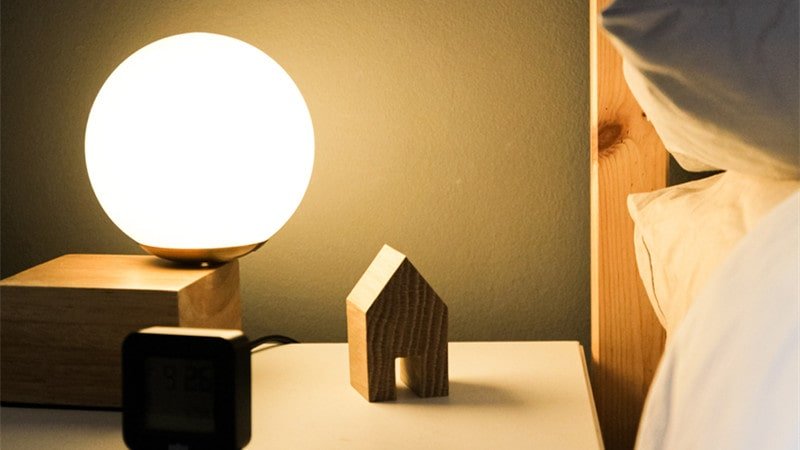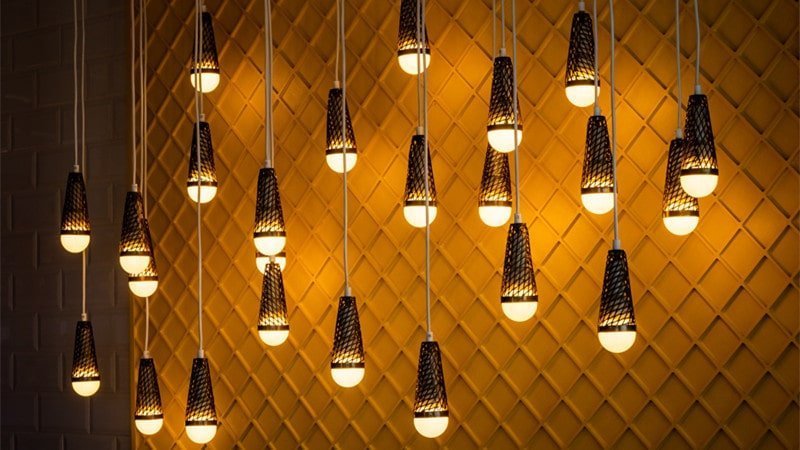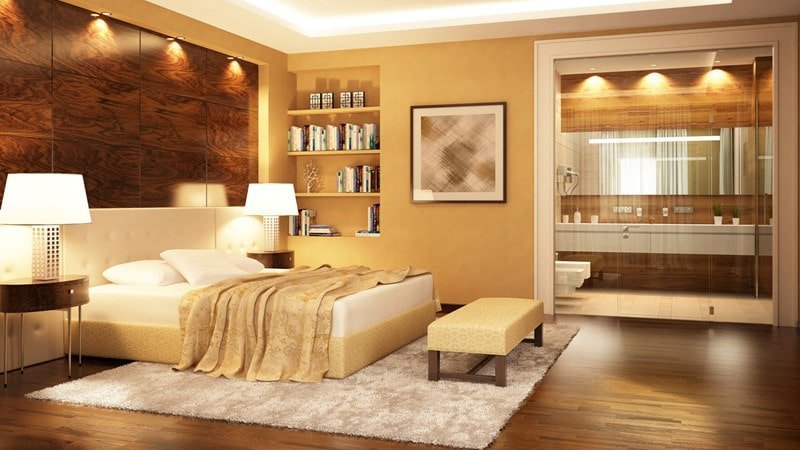A night lamp is a common fixture in most bedrooms. It gives off a comforting and soothing atmosphere while keeping you secure as you drift off to slumberland. And for a child, it keeps the monsters and nightmares away.
As an adult, however, we’ve come to realize how light can become an external influencer on our sleep patterns. Did you know that there are certain LED colored lights that can improve our sleep quality and others that can hinder it? Here’s everything you need to know about the best LED light color for sleep.
How Does Light Help You with Sleep?

When we think of a good night’s sleep, we think of going to bed in pitch dark and drawing the curtains close. And there are times when any form of light, be it a night light, the TV, or some light coming in when you keep the door ajar, can ruin your sleep.
But there are instances when snoozing in the darkness is not your best option. There are times when you can resort to using specific lights to naturally lull you into a restful sleep.
Here is the main reason why light is essential for getting sleep:
It impacts the circadian rhythm, the natural internal clock we all have.
When exposed to light at the wrong time, your body’s circadian rhythm gets disrupted. It can alter the “pre-programmed” time when your temperature is supposed to drop, your muscles should relax, and you should feel drowsy. And all of these are controlled by melatonin, the sleep hormone.
The more melatonin your body produces, the sleepier you feel. So when there are increased levels of light pollution, your body will struggle to produce melatonin.
What LED Light Color Is Best for Your Sleep?
This may come as a surprise but the best LED light color for sleep is red.
This warm hue may be a bolder color, but it boasts a low-color temperature — even lower than the sun, making it the best choice for an LED light.
It is a color that will not interrupt your circadian rhythm. And if you wake up in the middle of the night, seeing a warm red pigment will not be overwhelming on your eyes.
However, you should note, the red light we refer to here is light that emits red light wavelengths. Not just bulbs that are tinted red. Although tinted bulbs can still be soothing and put you in a relaxing mood, it is not as effective as red light therapy.
The Science Behind How Different Colored Lights Affect Sleep Inducement

The scientific theory behind the effects of different colored lights on sleep inducement is primarily related to melatonin production. When darkness falls, your body naturally releases more of this hormone and releases less of it when you are exposed to light.
Another significant contributor to this physiological process is the specialized photosensitive cells called ipRGC found in your eyes’ retina. These cells are responsible for detecting light and transmitting the message to the part of your brain that regulates your circadian rhythm.
These cells are susceptible to blue wavelengths and are least sensitive to red wavelengths.
Frequently Asked Questions
1. What Is the Best Color Night Light?
Red light or any other warm-hued colors such as soft orange or a dull yellow are the most ideal night light colors. Red lights have a long-wavelength LED that helps promote sleep. Red light does not stop the sleep hormone melatonin from producing, thus leading to better sleep.
2. Is Red Light Good for Sleeping?
Yes, red is considered the most conducive LED light for sleeping. Unlike other colors, like white or blue, that will signal your brain that it is daytime or time to wake up, red is a more relaxing color that will not stimulate your brain. And remember, it should be light that emits red wavelengths and not just a bulb that is tinted red.
3. Is Green Light Good for Sleep?
Green belongs to the cooler color spectrum that doesn’t provide a conducive background for a good night’s sleep. Your retinas will be most delicate to these colors, making it difficult for you to sleep.
4. What Are the Best Paint and Furnishing Colors for Sleeping in Bedrooms?
You can’t go wrong with an eggshell white or shades of cream to create a calming surrounding in the bedroom. Walls painted in these shades provide a clean environment that’s easy and restful to tired eyes. You can also go for pastel shades of blue, beige, and seashell pink as these shades can also encourage sleep and relaxation.
As for furnishing, modern furnishing can help you achieve a contemporary ambiance depending on your mood and personal preference. You can also incorporate classic wicker furniture with floral prints to create a more cozy environment.
5. What Color Shouldn’t You Use as a Night Light?
Blue light is a no-no for a good night’s sleep. When your eyes see blue light or even get exposed to it, it interrupts the release of melatonin.
It instructs your brain to wake up instead of going to sleep. It’s a color that is detrimental to your biological sleep cycle since it can interrupt melatonin production for about 3 hours. For example, when you check your phone, tablets, or other electronic devices, you tend to find it difficult to fall asleep. This is because these gadgets use blue light to light up the screens.
6. Are There Any Recommended Colors for Sleep Aside from Red?
Apart from red light, you can choose colors close to red in the color spectrum, such as dim orange or warm yellow lights. These colors may not be as effective as red, but they can help you have an easier time falling asleep.




